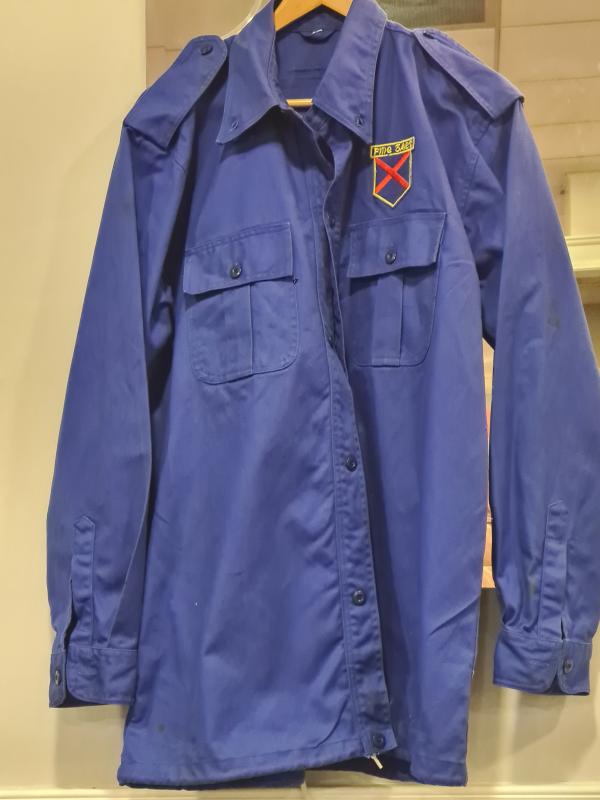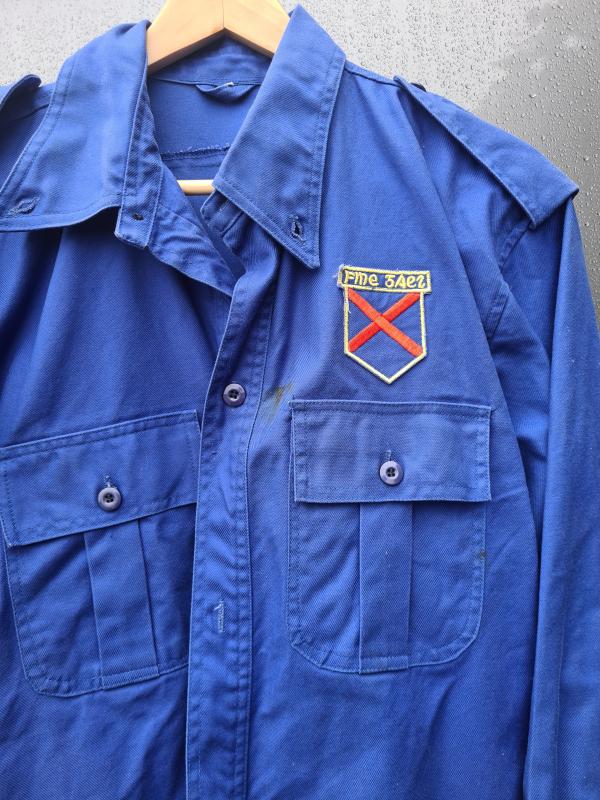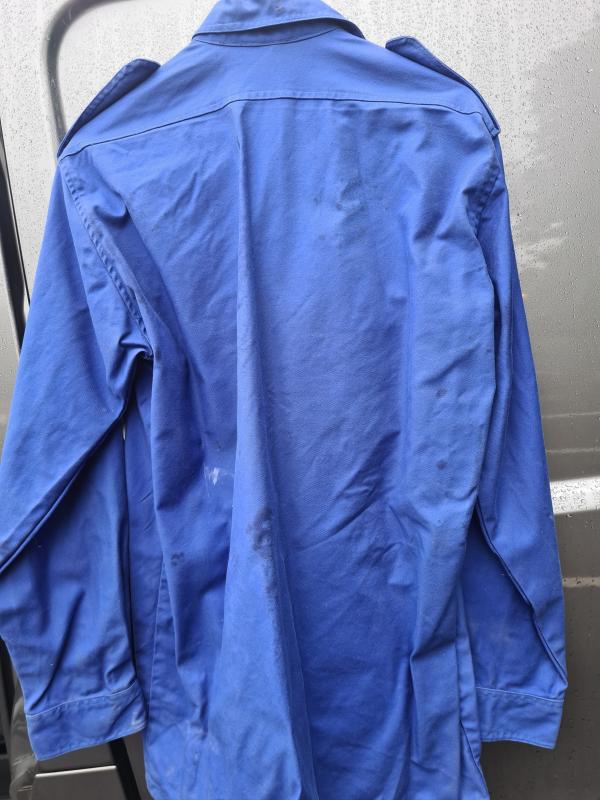1930s Irish Blueshirts (Facists)
Reproduction Blueshirts shirt.
Blueshirts - the beginning
Prior to the 1932 General Election, former soldiers of the Irish Free State Army formed the Army Comrades Association (ACA) with the aim of promoting the welfare of its members. The results of the election led to a Fianna Fáil and Labour coalition with Éamon de Valera at the helm as President of the Executive Council. De Valera called a snap election in January 1933 following the formation of a new opposition political party, the National Centre Party. The ACA provided stewards at Cumann na nGaedheal (political party, a precursor to Fine Gael) and clashes regularly broke out between the ACA and Irish Republican Army (IRA), particularly in the lead up to the 1933 election. On 24 January, the General Election was held, and excluding the Ceann Comhairle (speaker), Fianna Fáil won exactly half the seats and formed a government with support from the Labour Party, eventually winning enough by-elections to govern with solely as the majority party.
In March 1933, the ACA members began to wear blueshirts, the motivation being to distinguish the group from other organisations in the event of violence. The colour blue was chosen by Ernest Blythe, specifically because it was Saint Patrick’s blue and the philosophy behind the choice was to rekindle the Irish nationalistic spirit. Four months later, Eoin O’Duffy, the former Garda Commissioner, sacked by de Valera, took charge. He renamed the organisation, the National Guard and it became better known as the Blueshirts
Several principles embraced by the Irish Blueshirts ensured that the organisation became associated with fascism. In addition to the uniform, members greeted their comrades by raising their arms above the head and indeed they addressed their leader by saying ‘Hoch O’Duffy’. Whilst certain parallels existed between the Irish Blueshirts and its European counterparts, in the main the Irish organisation supported democracy and did not engage in extreme violence. The leadership of the Blueshirts may have possessed fascist tendencies yet the strongest support for the organisation came from farmers whose income had fallen during the Economic War.
The battleground in 1930s Ireland was the economic war with Britain and the contentious issue of annuities payable by the farming community to the de Valera government. The annuities debacle stemmed from the Anglo-Irish Treaty of 1922. In 1926, the Government of the Irish Free State, Cumann na nGaedheal, undertook ‘to pay to the British Government at agreed intervals the full amount of the annuities accruing due from time to time under the Irish Land Acts, 1891-1909’.4 However, in 1932, when Fianna Fáil came to power, one of the new government's first acts was to suspend the payment of land annuities to Britain. Britain retaliated by putting high taxes on Irish cattle and dairy goods. The Irish government then put high taxes on British coal.
In Ireland, tension was mounting and matters came to a head in August 1933 when Eoin O’Duffy announced a Blueshirt march in Dublin to commemorate Michael Collins, Arthur Griffith and Kevin O’Higgins. Exercising his power, de Valera banned the march and used the Garda to enforce
However, this move only antagonised O’Duffy and the Blueshirts as the same rules were not extended to the IRA. De Valera’s actions incited cause for concern that he was about to establish a dictatorship. One must remember that political hostilities were rife during this period. A month later, Cumann na nGaedheal, the Centre Party and the Blueshirts converged forming a new party; Fine Gael, with O’Duffy elected as its leader
O’Duffy encouraged farmers to refuse to pay land annuities to the Government. This lead to a conflict, whereby the Gardai seized animals and farm equipment and auctioned them to recover monies due. Matters came to a crescendo in 1934 with a serious of anti-establishment outrages being attributed to the Blueshirts. These ranged from petty violence, such as breaking windows, to more serious offences including assault and shootings.
Eoin O’Duffy became more and more entrenched in fascism and in September 1935 he resigned as leader of Fine Gael. The Blueshirts began to decline meaning that by the end of 1935, the organisation was a spent force. However O'Duffy was not about to let the movement die. He launched a fascist political party inspired by Italy's Mussolini, the National Corporate Party, and in 1936 he organised an Irish Brigade to fight for Francisco Franco in the Spanish
Code: 50932





